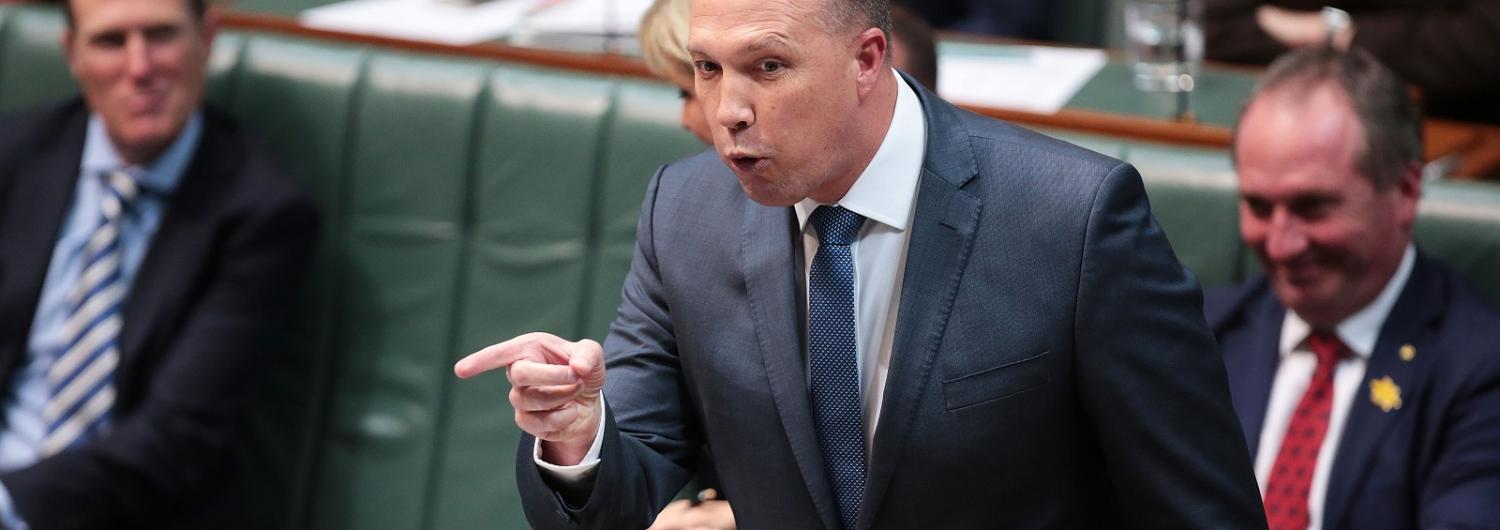On the airwaves this week, Australia’s Immigration Minister Peter Dutton continues to describe asylum seekers who are yet to submit their protection applications as 'fake refugees'. The Minister’s comments ignore the fact that government policy actually prevented these 7500 people from applying earlier, an approach intended to deter them and potential future arrivals from seeking protection in Australia.
History reminds us that once, Australia’s refugee policy was intended to function very differently.
Forty years ago this week, on 24 May 1977, Australia’s then Minister for Immigration, Michael MacKellar, presented principles for Australia’s refugee policy to parliament. Although the Department of Immigration was established in 1945, welcoming many refugees after World War II, it was not until 1977 that the country set out how an ongoing refugee and humanitarian program should work. The policy was announced by the Liberal-National Coalition government, led by Prime Minister Malcolm Fraser, in the midst of Australia’s first sustained arrival of asylum seekers by boat, and just a few years after the end of the racially discriminatory ‘White Australia’ policy.
The first principle among those outlined by MacKellar was that Australia 'fully recognises its humanitarian commitment' to refugees. The second was that the decision to accept refugees must always remain with the government, thus showing that control over entry would be maintained. Although in recent years ‘border control’ has come to dominate the discourse, it can still be done while respecting international obligations.
The refugee policy principles and framework MacKellar drew up were the culmination of ideas that had been circulating for some time. In June 1976 a Senate committee concluded that Australia could not allow the 'unrestricted entry of tens of thousands of refugees', but needed a way of responding to urgent humanitarian situations. The committee recommended the establishment of 'administrative machinery' and policy guidelines for Australia’s response to refugees, including an on-going and identifiable refugee intake.
Notably, the Senate committee also took the view that the admission of refugees and other displaced persons should reflect the 'spirit' of Australia’s obligations under the Refugee Convention. Archival documents of the late 1970s show that this conception of refugee policy carried through to inform the Fraser government’s decision-making.
In the late 1970s, when deciding how to respond to asylum seekers arriving by boat, the then departments of Immigration, Foreign Affairs, and Prime Minister & Cabinet noted that as a party to the Refugee Convention and Protocol, and as 'a humane government respecting human rights', Australia had a commitment to provide 'sanctuary to genuine refugees within its territory', and an obligation 'not to forcibly return those genuine refugees to the country from which they have fled'.
The wording used reflected two commitments: the obligation not to send individuals back to a place where they may fear persecution (the principle of non-refoulement), and the need to provide 'sanctuary' within Australian territory to those found to be refugees. That second commitment meant that the protection granted by Australia to refugees should encompass the full range of rights and protections under the Refugee Convention (such as the rights to education, to access courts, to work and to obtain travel documents).
MacKellar’s plans for refugee policy also included the establishment of a procedure to determine who was a refugee and who was not. This was necessary to ensure that Australia did not breach its non-refoulement obligations, and led to the creation of a fair, efficient and principled process through which asylum seekers could apply for protection – exactly the kind of procedure to which the 7500 people in Australia today should have access. This procedure also served MacKellar’s first two principles of refugee policy – recognising Australia’s international obligations – while at the same time allowing for orderly, controlled entry.
Australia is not the only country to insist on the government’s right to control entry. Recently, the Belgian Immigration Minister Theo Francken expressed satisfaction at a ruling by the European Court of Justice that affirmed Belgium’s right to deny a Syrian family temporary visas and prevent them from leaving the besieged city of Aleppo and entering Europe safely.
Of course, sovereign rights to control entry are not absolute. By ratifying the Refugee Convention, countries voluntarily accept a legal obligation to protect refugees within their territory or jurisdiction (representing a carve-out from ordinary migration controls).
Where Australia stands out is in its determination to exercise its border controls far and wide, and to use them to deter refugees from seeking protection. In his recent report on Australia, the United Nations Special Rapporteur on the Human Rights of Migrants, François Crépeau, concluded that the government should develop an approach to border management in which the rights of refugees and migrants 'are always the first consideration'.
A look back at the origins of Australia’s refugee policy shows that these rights were intended to be a priority – envisioned as co-existing with control of entry. And while forced migration is a complex global challenge today, it is not without historical parallels. Now, as then, government shapes policy – in procedure and in spirit.

